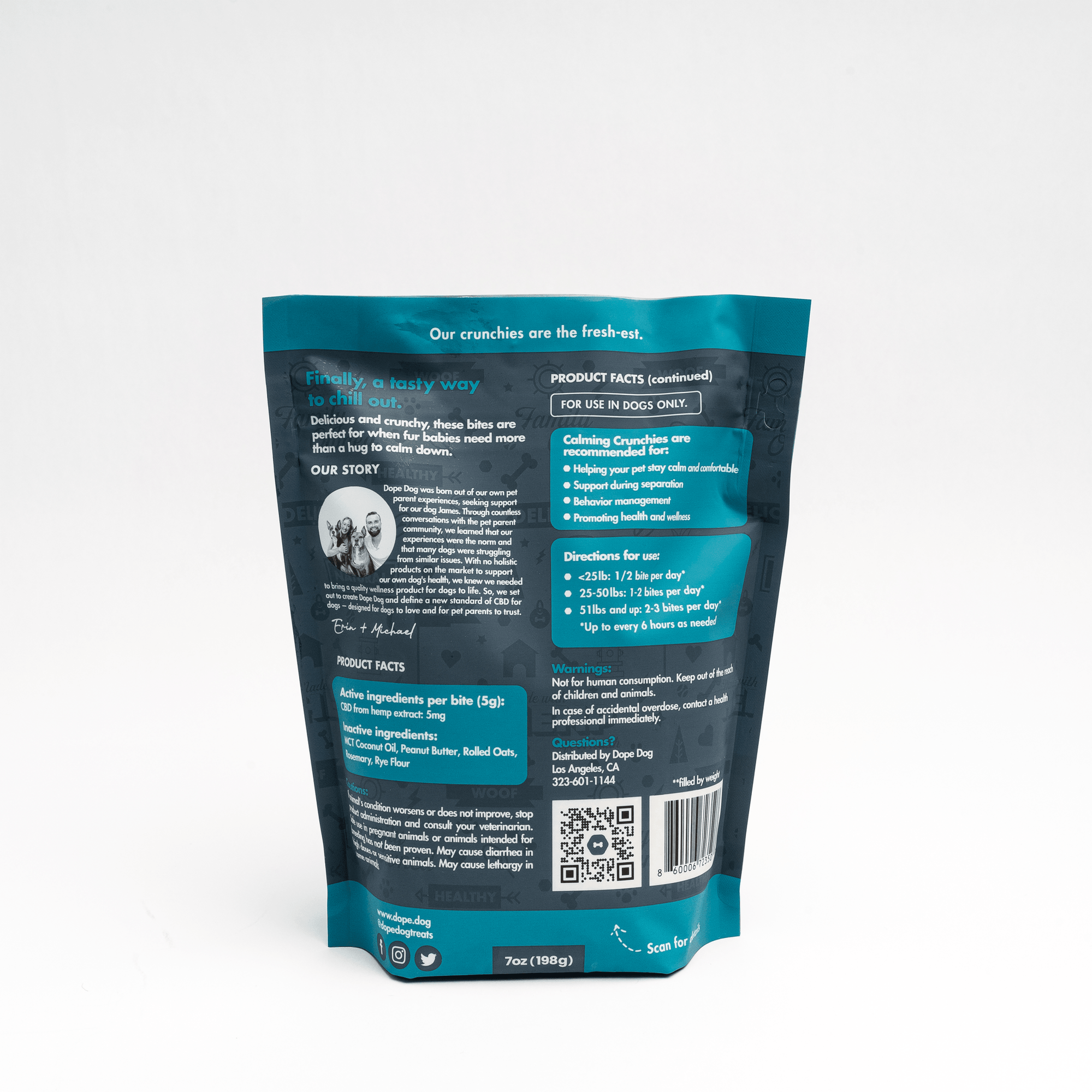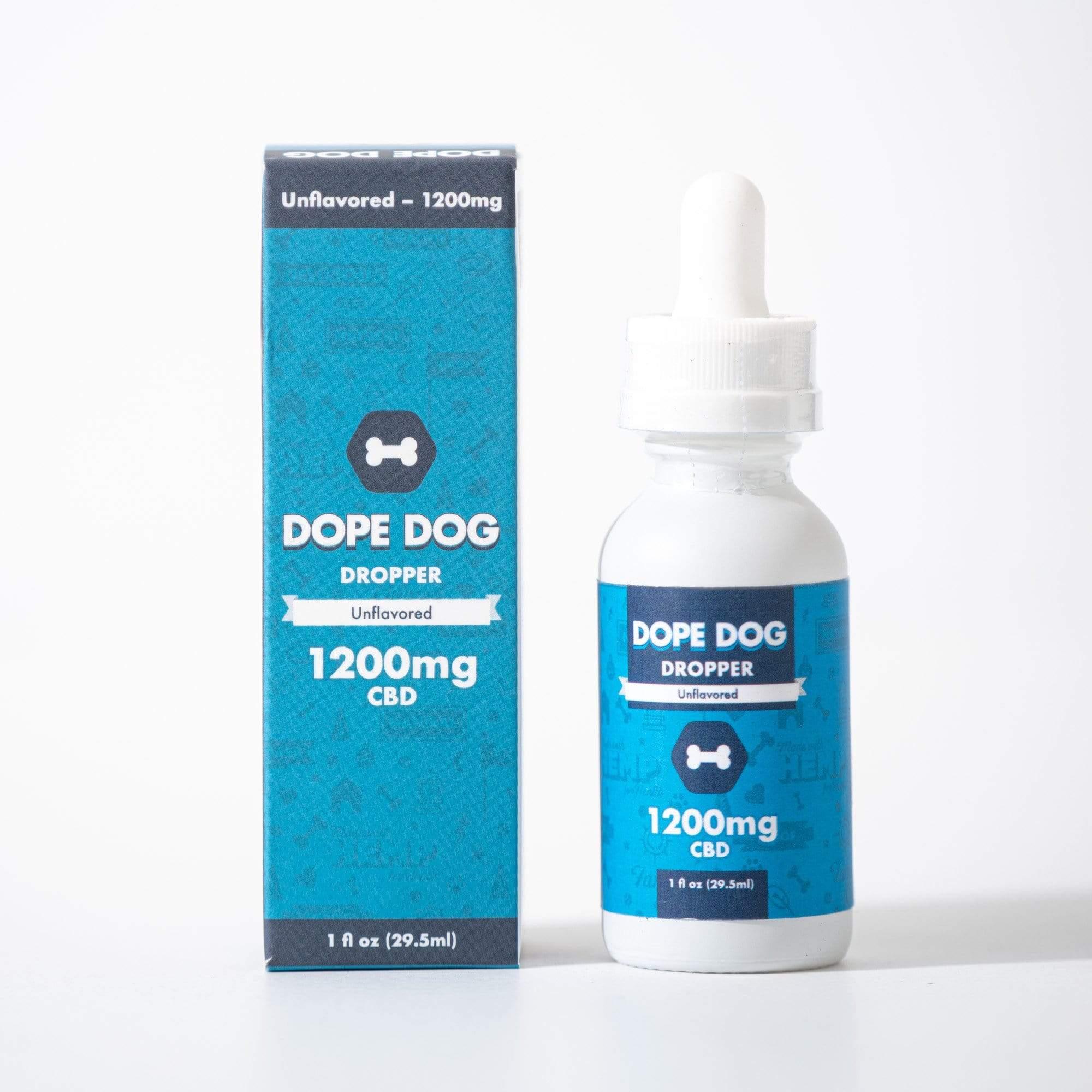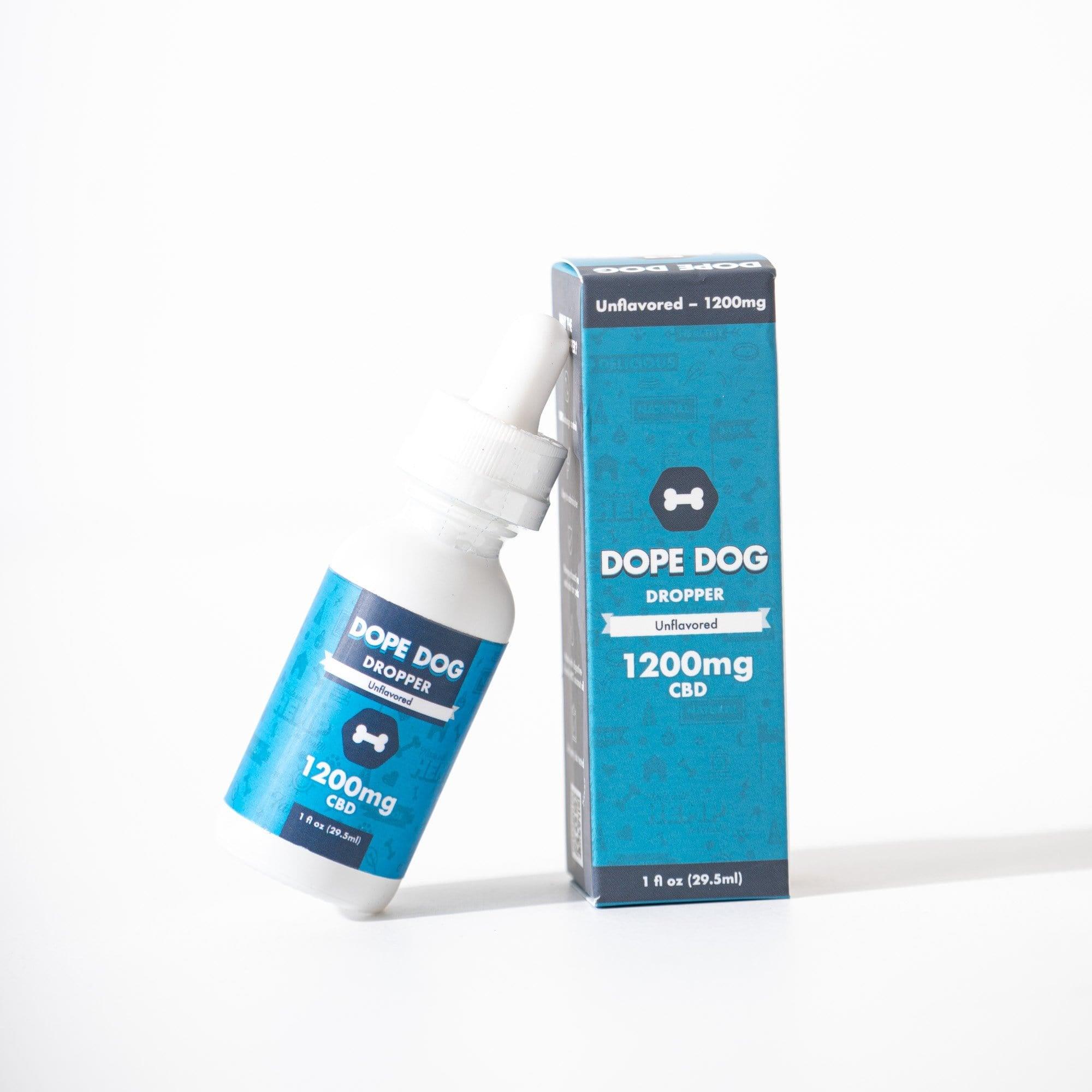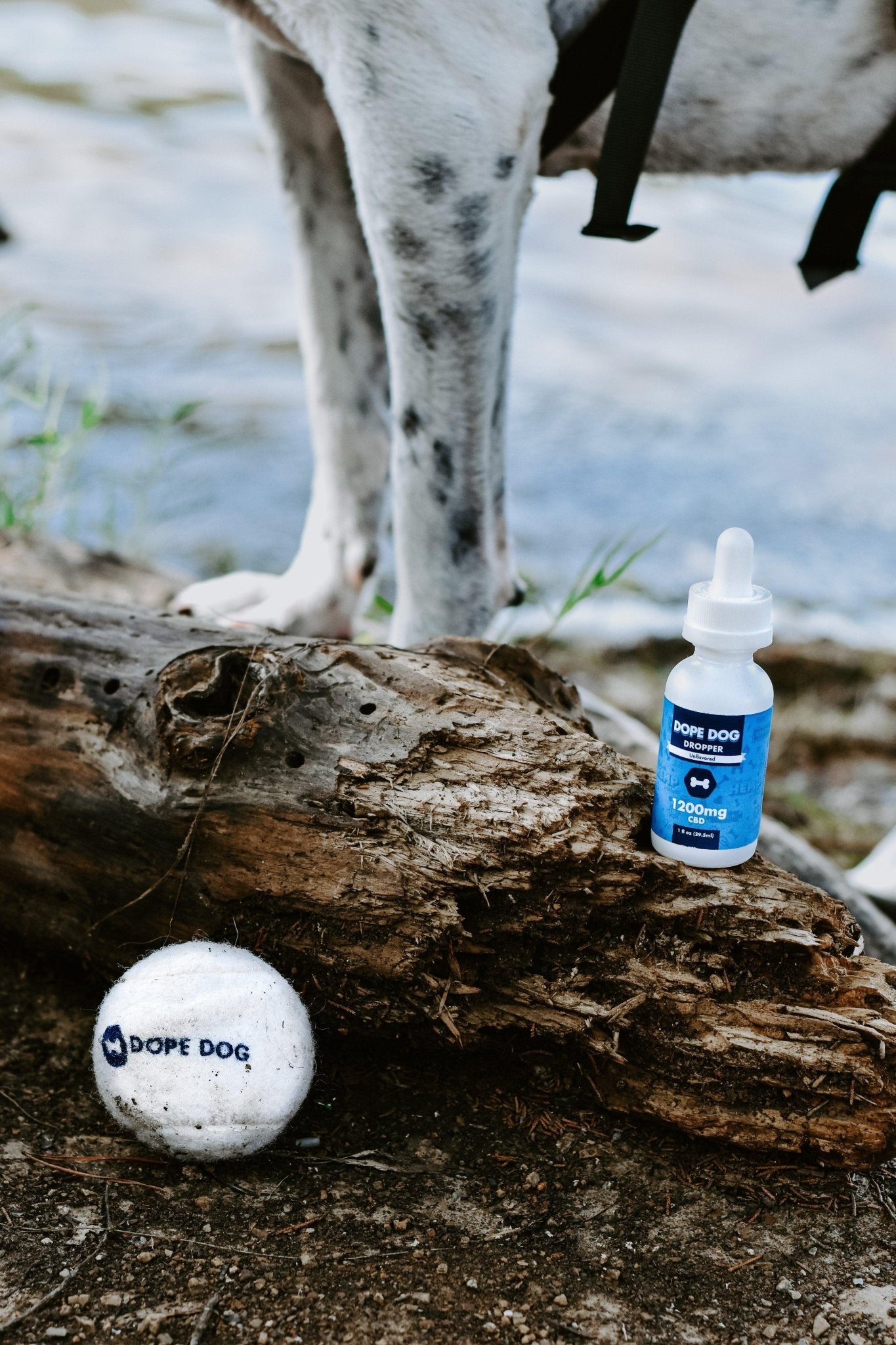Is Zyrtec Good for Dogs?
Welcome to our comprehensive guide on Zyrtec for dogs! Just like humans, our canine companions can suffer from allergies, making them uncomfortable and itchy. That's where Zyrtec (cetirizine) comes into the picture.
In this detailed review, we'll unravel how Zyrtec operates and its potential benefits for dogs. With the "Zyrtec for Dogs dosage chart," you can ensure that you're giving the right amount based on your dog's weight. Still, it's always advised to consult with a vet about the appropriate "Zyrtec for Dogs dosage."
Side effects can be a concern. Therefore, we'll dive deep into the potential "Zyrtec for Dogs side effects" to keep you informed. For pet owners weighing options, our comparative analysis of "apoquel vs Zyrtec for Dogs" and "Benadryl or Zyrtec for dogs" will offer clarity on which might be best for your furry friend.
Related: CBD Oil For Dogs With Cancer | Dope Dog
By examining "Zyrtec for Dogs reviews," you'll gain insights from other pet owners' experiences with this medication. Moreover, consulting with a veterinarian is paramount before making any medication decisions. They can offer insights on "cetirizine for dog uses" and tailor the treatment to fit your pet's needs.
In our frequently asked questions section, topics like using Zyrtec for puppies and potential interactions with other medications are covered, ensuring you're aware of any safety concerns for prolonged use.
In conclusion, while Zyrtec holds the promise of alleviating allergic symptoms, your dog's safety remains paramount. It's essential to consult a vet for specific advice. Join us as we explore Zyrtec's potential in offering your dog a comfortable and itch-free life!
What is Zyrtec for Dogs?

Zyrtec for Dogs is an antihistamine medication commonly used to relieve allergy symptoms in our furry friends. Just like humans, dogs can suffer from various types of allergies, including seasonal allergies, skin allergies, and food allergies. Allergies can lead to itching, sneezing, watery eyes, and skin irritations in our furry friends.
Zyrtec, with cetirizine, blocks histamine effects released during an allergic reaction. By inhibiting the action of histamine, Zyrtec helps to reduce the intensity and frequency of allergic symptoms in dogs.
Importance of Allergy Relief for Dogs
Allergies can significantly impact a dog's quality of life. Dogs experiencing allergies may constantly scratch or lick themselves, resulting in irritated and inflamed skin. This can lead to secondary infections and discomfort, making it difficult for them to enjoy their daily activities. Allergies can also affect a dog's respiratory system, causing them to cough, sneeze, or have difficulty breathing.
Furthermore, allergies can lead to behavioral changes in dogs. They may become restless, irritable, or even exhibit signs of aggression due to the constant discomfort they are experiencing. Allergies can also interfere with their sleep patterns, leading to sleep deprivation and further exacerbating their overall well-being.
As responsible pet owners, it is crucial for us to recognize and address our dog's allergies promptly. Giving dogs Zyrtec for allergy relief can alleviate symptoms and improve their overall well-being.
Related: MSM For Dogs
Zyrtec: How Does it Work?
Zyrtec, or cetirizine, is a widely used antihistamine medication for treating allergies in dogs. To understand how Zyrtec works, it is important to first grasp the role of histamine in allergic reactions.
Mechanism of Action

Histamine is a natural chemical released by the body's immune system in response to an allergen. When dogs encounter allergens like pollen or specific foods, their immune system releases histamine, seeing it as a threat. Histamine binds to specific receptors in the body, triggering a cascade of inflammatory responses that result in allergy symptoms.
Zyrtec works by blocking the histamine receptors, specifically the H1 receptors, in the body. By doing so, Zyrtec prevents histamine from binding to these receptors, thereby inhibiting the allergic response. This reduces symptoms like itching, sneezing, watery eyes, and skin irritations in dogs.
Zyrtec relieves allergy symptoms but doesn't cure the cause. Addressing the root cause ensures long-term management.
Recommended Dosage for Dogs
Consult a vet before giving Zyrtec to dogs, as dosage varies with weight, age, health, and symptom severity.
Generally, dogs take 0.5-1 mg Zyrtec per pound once or twice daily. Always follow your vet's specific instructions based on your dog's health.
It is important to note that Zyrtec is available in different strengths, such as 5 mg and 10 mg tablets. Choose the right tablet strength and split it based on your vet's advice.
Are you looking for a worry-free way to safely dose your dog? Dope Dog has treats that make it easier than ever to offer your CBD. Shop today.

Potential Side Effects and Precautions
Zyrtec is typically safe for dogs under veterinary guidance, but it's important to be aware of potential side effects and precautions.
Zyrtec in dogs can cause drowsiness, dry mouth, and stomach issues like vomiting. If these persist or worsen, consult your vet.
It is crucial to inform your veterinarian about any pre-existing health conditions or medications your dog may be taking, as certain medications or health conditions may interact with Zyrtec. Moreover, dogs with known allergies or hypersensitivity to cetirizine or other antihistamines shouldn't take Zyrtec.
While Zyrtec is generally safe for dogs, it is always recommended to seek professional advice before starting any medication regimen. Your veterinarian will assess your dog's specific needs, consider any potential interactions or contraindications, and provide you with the most appropriate guidance for using Zyrtec to manage your dog's allergies effectively.
Related: Dog Get Stung By A Bee?
Conditions Zyrtec Can Help Manage
Zyrtec for dogs can be beneficial in managing various allergic conditions that our furry friends may experience. Let's explore some of the common conditions where Zyrtec can provide relief:
Seasonal Allergies in Dogs
Seasonal allergies, also known as atopic dermatitis, are allergic reactions that occur during specific times of the year. Dogs can develop sensitivities to environmental allergens such as pollen, grass, mold spores, or dust mites. These allergens can trigger an allergic response, leading to symptoms such as itching, redness, sneezing, and watery eyes.
Zyrtec can be effective in managing the symptoms of seasonal allergies in dogs. By blocking the action of histamine, Zyrtec helps reduce the itchiness and discomfort caused by allergic reactions to environmental allergens. It can provide relief and improve the overall well-being of dogs during allergy seasons.
Skin Allergies and Itching
Skin allergies are a common issue among dogs and can manifest in various forms, such as contact dermatitis, flea allergies, or food allergies. Dogs with skin allergies often experience intense itching, redness, inflammation, and skin irritations. Excessive scratching or licking can lead to secondary infections and further exacerbate the skin condition.
Zyrtec can help manage the itching and discomfort associated with skin allergies in dogs. By blocking histamine receptors, Zyrtec helps to reduce itching and inflammation, providing relief for dogs suffering from skin allergies. It is important to identify the underlying cause of the skin allergy and address it alongside the use of Zyrtec for optimal management.
Related: CBD Overdose on a Dog
Food Allergies and Intolerance

Food allergies and intolerance in dogs can result in gastrointestinal issues, skin problems, or a combination of both. Dogs can develop allergies or sensitivities to certain ingredients in their diet, such as beef, chicken, grains, or dairy. Symptoms of food allergies may include vomiting, diarrhea, itchy skin, ear infections, and gastrointestinal disturbances.
While Zyrtec can help manage the symptoms of food allergies, it does not address the underlying cause. If you suspect that your dog has a food allergy, it is essential to work with your veterinarian to conduct an elimination diet or other diagnostic tests to identify the specific allergens. After identifying the allergens, combine a tailored diet plan with Zyrtec to reduce allergic reactions and comfort your dog.
It is important to note that Zyrtec is not a cure for these conditions but rather a tool to manage the symptoms associated with allergies. Consulting with a veterinarian is crucial to properly diagnose the underlying condition and develop a comprehensive treatment plan that may include Zyrtec and other appropriate measures to ensure the well-being of your furry friend.
Administering Zyrtec to Dogs
Administering medication to our furry companions can be a daunting task, especially if they are not fond of taking pills or liquid medications. When it comes to giving Zyrtec to dogs, it is important to follow proper administration techniques to ensure that they receive the appropriate dosage and experience the desired therapeutic effects. Let's explore some key aspects of administering Zyrtec to dogs:
Consultation with a Veterinarian
Before starting your dog on Zyrtec or any other medication, it is crucial to consult with a veterinarian. They will assess your dog's specific needs, consider any underlying health conditions, and provide you with the most accurate and appropriate guidance.
During the consultation, be prepared to discuss your dog's medical history, current medications, and any known allergies. This information will help your veterinarian determine if Zyrtec is the right choice for managing your dog's allergies and if any adjustments need to be made to the dosage or treatment plan.
Related: CBD for Itchy Dogs | Dope.dog
Forms and Availability of Zyrtec
Zyrtec for dogs is available in different forms, including tablets and liquid formulations. Tablets are the most common form and are available in various strengths, such as 5 mg and 10 mg. The appropriate strength and dosage will be determined by your veterinarian based on your dog's needs.
Zyrtec can be purchased from various sources, including veterinary clinics, pet supply stores, and online retailers. Ensure that you are obtaining genuine Zyrtec from a reputable source to ensure the quality and safety of the medication.
Proper Administration Techniques
When administering Zyrtec to your dog, it is important to follow the guidelines provided by your veterinarian. Here are some tips to help make the process easier:
- Oral Administration: Most commonly, Zyrtec tablets are administered orally. You can either give the tablet directly or hide it in a treat or a small amount of food. Ensure that your dog consumes the entire dose to ensure they receive the appropriate amount.
- Liquid Formulation: If your veterinarian prescribes a liquid formulation of Zyrtec, use the provided measuring device to accurately measure the recommended dosage. Administer the liquid directly into your dog's mouth or mix it with a small amount of food to ensure they consume the full dose.
- Timing: Zyrtec can be given once or twice daily, depending on your veterinarian's recommendation. Follow the prescribed schedule to maintain a consistent level of medication in your dog's system.
- Consistency: It is important to administer Zyrtec consistently as prescribed by your veterinarian. Skipping doses or inconsistent administration may hinder the effectiveness of the medication.
If you encounter difficulties in administering Zyrtec to your dog, such as refusal to take the medication or difficulty swallowing, consult your veterinarian for alternative solutions or techniques. They may be able to provide additional guidance or suggest alternative forms of Zyrtec that may be more suitable for your dog's needs.

Photo from https://dope.dog/
Remember, it is always best to consult with a veterinarian for personalized advice and guidance on administering Zyrtec to your dog. They will take into consideration your dog's unique requirements and help ensure that the medication is administered safely and effectively.
Frequently Asked Questions about Zyrtec for Dogs
As with any medication, it's natural to have questions and concerns about using Zyrtec for dogs. To address some common queries, we've compiled a list of frequently asked questions to provide you with comprehensive information and guidance. Let's delve into these FAQs:
Can Zyrtec be used for puppies?
Zyrtec can be used for puppies, but it is important to consult with a veterinarian before administering any medication. Puppies have developing immune systems and may require different dosages or alternative treatment options. Your veterinarian will consider your puppy's age, weight, and overall health to determine if Zyrtec is appropriate and provide you with the correct dosage instructions.
Can Zyrtec interact with other medications?
Zyrtec may interact with certain medications, so it's crucial to inform your veterinarian about any other medications your dog is taking. Certain drugs, such as sedatives or medications that affect the central nervous system, may interact with Zyrtec and cause adverse effects. Your veterinarian will review your dog's medication history and make appropriate recommendations to avoid any potential interactions.
Are you looking for high-quality CBD products for your dog? Our products have simple quality ingredients that are sourced right here in the United States! Check out Dope.dog today.
Is Zyrtec safe for long-term use in dogs?
Zyrtec is generally considered safe for long-term use in dogs, but it is essential to consult with your veterinarian for guidance. Long-term use may be necessary for dogs with chronic allergies or ongoing symptoms. Your veterinarian will regularly assess your dog's condition and adjust the dosage or treatment plan as needed. Monitoring your dog for any changes in health or behavior is crucial during long-term use.
Can Zyrtec cause drowsiness in dogs?
Drowsiness is a potential side effect of Zyrtec in dogs, although it is not as common as in humans. Most dogs tolerate Zyrtec well without experiencing significant drowsiness. However, some dogs may be more sensitive to the medication and may exhibit mild lethargy or sleepiness. If you notice excessive drowsiness or any other concerning side effects, consult your veterinarian.
Can Zyrtec be used alongside other allergy management techniques?
Yes, Zyrtec can be used in conjunction with other allergy management techniques. It is often part of a comprehensive approach that may include environmental modifications, hypoallergenic diets, and topical treatments for skin allergies. Your veterinarian will develop a personalized treatment plan based on your dog's specific needs, considering both Zyrtec and other appropriate strategies to effectively manage their allergies.
Remember, it is always recommended to consult with a veterinarian for personalized advice regarding your dog's specific situation. They will provide you with the most accurate information, consider your dog's individual needs, and guide you in using Zyrtec or any other medication safely and effectively.
Conclusion
Zyrtec for dogs can be a valuable tool in managing various allergies and providing relief for our furry friends. Allergies can significantly impact a dog's quality of life, causing discomfort, itching, and other troublesome symptoms. Zyrtec, with its antihistamine properties, works by blocking histamine receptors, reducing the intensity and frequency of allergic reactions.
While Zyrtec can be effective in managing allergies, it is important to remember that it is not a cure for the underlying allergen. Identifying and addressing the root cause of the allergy is essential for long-term management. Environmental modifications, dietary changes, and other measures may be necessary in conjunction with Zyrtec to provide comprehensive allergy relief for your dog.
Always prioritize the well-being of your furry friend and consult with a veterinarian for professional guidance. They will help you develop a tailored treatment plan, monitor your dog's progress, and make any necessary adjustments to ensure the best possible outcome.
Remember, a happy and healthy dog is a cherished companion, and managing their allergies effectively can contribute to their well-being and happiness.
Love your pup every day the easy way with dope.dog. Check out their full line of pet-safe CBD products today.
Providing a Comfortable and Allergy-Free Life for Dogs
Ensuring a comfortable and allergy-free life for our dogs goes beyond the use of medications like Zyrtec. While Zyrtec can provide relief from allergy symptoms, there are additional steps we can take to minimize allergen exposure and improve our furry friends' overall well-being. Here are some tips to consider:
Environmental Modifications
Making certain changes in your dog's environment can help reduce their exposure to allergens. For example, regularly vacuuming your home and washing your dog's bedding can help remove allergens such as dust mites or pollen. Using hypoallergenic cleaning products and keeping your dog's living spaces clean can also make a difference.
If your dog has seasonal allergies, consider limiting their time outdoors during peak pollen seasons or taking precautions such as wiping their paws and body with a damp cloth after outdoor activities. This can help minimize the transfer of allergens into your home.
Diet and Nutrition
In some cases, food allergies or sensitivities can contribute to allergic reactions in dogs. Working with your veterinarian to identify and address any potential food allergies can be crucial. Your veterinarian may recommend an elimination diet or a hypoallergenic diet trial to determine if specific ingredients are causing allergic reactions.
Choosing high-quality, balanced dog food that suits your dog's specific dietary needs can also contribute to their overall health and immune system function. Providing a nutritious and well-balanced diet can help support your dog's immune system and potentially reduce the likelihood of allergic reactions.
Related: CBD Oil For Dogs
Regular Grooming and Skin Care
Regular grooming and skin care are essential for dogs, especially those prone to allergies. Bathing your dog with a gentle, hypoallergenic shampoo can help remove allergens from their coat and skin. Additionally, regular brushing can prevent matting and remove loose fur, reducing the chances of allergens getting trapped in their coat.
If your dog has skin allergies, your veterinarian may recommend specific topical treatments or medicated shampoos to help soothe their skin and alleviate itching.
Following their guidance and maintaining a regular grooming routine can significantly contribute to your dog's comfort and help manage their allergies effectively.
Veterinary Check-ups and Monitoring
Regular veterinary check-ups are crucial for monitoring your dog's overall health, including their allergies. Your veterinarian can assess the effectiveness of the current treatment plan, make any necessary adjustments, and address any concerns or new symptoms that may arise. They can also provide guidance on long-term management and discuss any advances in allergy treatments that may benefit your dog.
Monitoring your dog's response to Zyrtec and any other allergy management strategies is important. Keep track of any changes in their symptoms, behavior, or overall well-being. This information can help you and your veterinarian make informed decisions about the best course of action for your dog's allergy management.
By combining the use of medications like Zyrtec with environmental modifications, proper nutrition, regular grooming, and veterinary care, you can provide your dog with a comfortable and allergy-free life. Remember, each dog is unique, so it's important to work closely with your veterinarian to develop an individualized plan that meets the specific needs of your furry companion.
Follow us on our Socials - Pinterest | Instagram | Youtube | Tiktok | Facebook


![Why is My Dog's Ear Swollen? [MUST KNOW!]](http://dope.dog/cdn/shop/articles/tim-higham-QxDXORRktWE-unsplash-555717.jpg?v=1697236049&width=1536)















